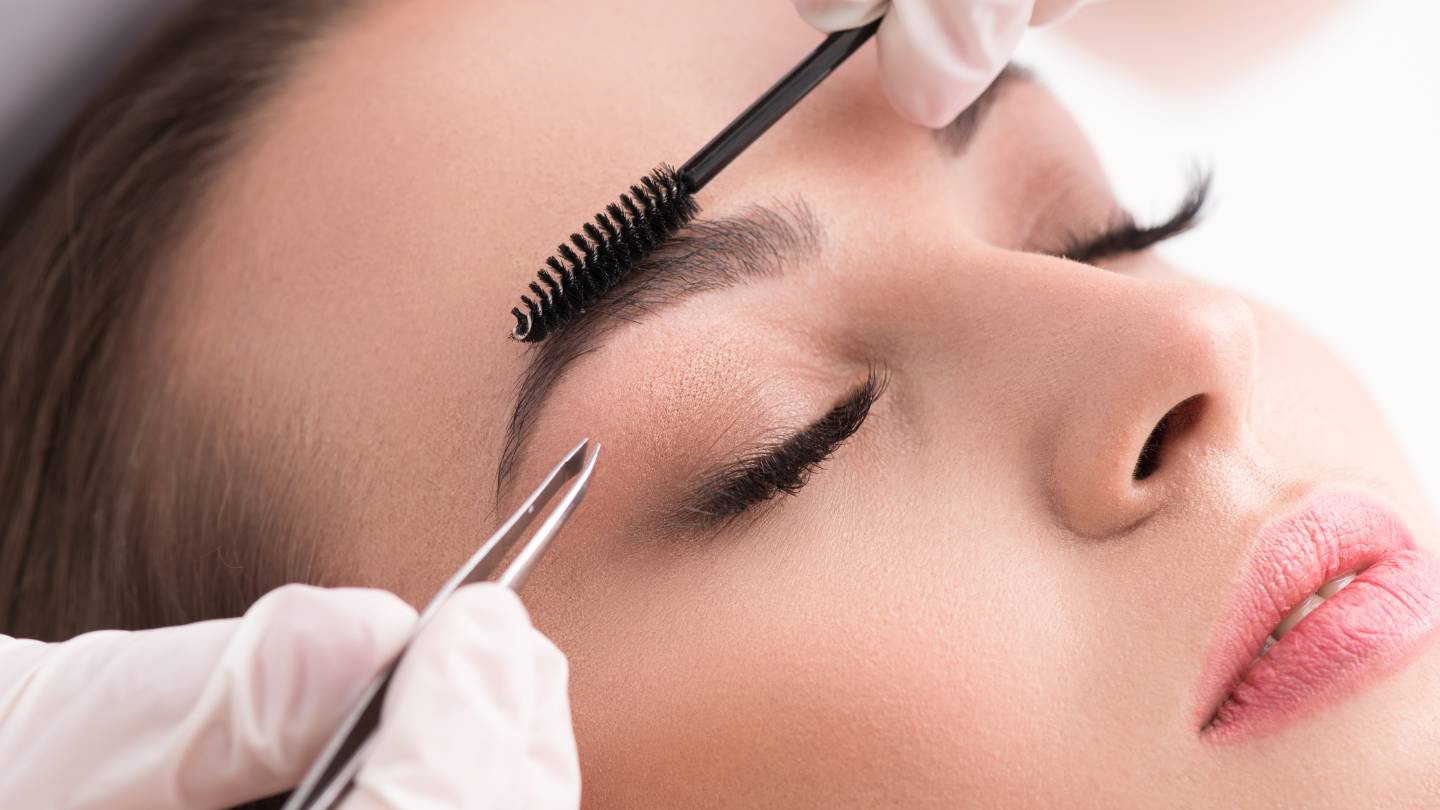Eyebrow feathering has become an increasingly popular cosmetic treatment for achieving natural-looking, fuller brows. Whether you’re considering it for the first time or looking to refine your knowledge, several factors should be considered before opting for this semi-permanent solution.
In this guide, we’ll explore everything you need to know to ensure you make an informed decision about eyebrow feathering.
Let’s get straight to the point.
Eyebrow feathering, including microblading and microfeathering, is a semi-permanent cosmetic tattoo technique that creates natural-looking, fuller brows with fine, hair-like strokes. It offers a time-saving, low-maintenance solution that lasts 12-18 months and suits various skin types and lifestyles.
Before opting for the procedure, consider your face shape and lifestyle, and choose a qualified professional. Risks include infection, allergic reactions, and premature fading.
Proper pre-treatment and aftercare are essential for achieving the best results. Touch-ups are usually required every 12-18 months to maintain the look.
Considerations Before Opting For Eyebrow Feathering
While eyebrow feathering can be a fantastic solution for many, weighing the following factors before treatment is important.
1. Your Lifestyle
Your lifestyle plays a significant role in whether eyebrow feathering is the right choice for you. You may notice faster pigment fading if you engage in activities that expose your face to harsh elements, such as sunbathing, swimming, or intense workouts.
If your skincare routine includes exfoliating treatments or retinol-based products, these can contribute to premature fading.
2. Face Shape and Eyebrow Structure
Achieving the perfect brow involves more than just filling in gaps. The shape of your eyebrows should complement your facial structure to enhance your natural features.
Here are some eyebrow shapes suited to various face types:
- Diamond-shaped face: A curved eyebrow softens sharp angles.
- Heart-shaped face: Low-arched, rounded brows help balance a prominent chin
- Rectangular face: A flatter brow with a slight downward dip can soften a longer face.
- Square face: Rounded brows with a soft arch help soften the angles of the jawline.
- Round face: High-arched brows elongate the face and provide a definition.
- Oval face: Softly angled brows are ideal for framing the balanced features of an oval face.
3. Professional Expertise
Selecting a highly qualified professional is important to achieving the best results with eyebrow feathering. Here’s what to look for when choosing your technician:
- Certification and training: Ensure the specialist has undergone formal microblading or eyebrow feathering training. Check their certifications and ensure they are up-to-date with industry standards.
- Portfolio: Ask to see before-and-after photos of previous clients. A diverse portfolio showcases the technician’s ability to work with different brow shapes and skin types.
- Client references: Don’t hesitate to ask for references from previous clients. Speaking with others who have undergone the procedure can give you insights into the technician’s skills and professionalism.
4. Pre-Treatment Preparation
Proper preparation before your appointment can greatly influence the results of your eyebrow feathering. Here’s what you should do:
- Avoid plucking or waxing: Leave your brows untouched for at least two weeks before the procedure to allow your natural hair to grow, giving the technician more to work with.
- Stop using certain skincare products: In the weeks before the procedure, refrain from using products like retinoids, glycolic acid, or facial scrubs on your brow area.
- Medication and supplements: Avoid blood-thinning medications such as ibuprofen and supplements like fish oil, as these can increase bleeding during the procedure.
Benefits Of Eyebrow Feathering
Eyebrow feathering offers numerous benefits, making it a preferred choice for many individuals.
- Natural appearance: The hair-like strokes seamlessly blend with your natural brows, giving an authentic and subtle result
- Customised design: A trained professional can design your brows to suit your facial features and style.
- Time-saving: Say goodbye to filling in your brows daily. Feathered eyebrows save you time in your makeup routine.
- Low maintenance: Arrow feathering requires minimal upkeep after the initial healing process.
- Long-lasting: Depending on your skin type and lifestyle, the results can last anywhere from 12 to 18 months.
- Less invasive: Feathering is gentler and less likely to cause scarring or long-term skin damage than traditional eyebrow tattooing methods.
Different Techniques In Eyebrow Feathering
If you’ve decided on eyebrow feathering, the next step is to choose the right technique for you. Let’s look at the options:
1. Feather Touch (Microblading)
This method uses a microblade to create delicate, hair-like strokes. Feather touch is ideal for those who want a natural, fuller appearance without the look of makeup.
It’s perfect for individuals with sparse or uneven brows.
2. Soft Shading
Soft shading uses a pen-like machine to create a more defined, makeup-like effect. This method works well for people who regularly use eyebrow tinting products or prefer a bolder, filled-in look.
3. Combo Brows
This hybrid technique combines microblading and soft shading to achieve a more dimensional brow. Strokes are usually applied at the front of the brow, while shading fills in the rest, creating a balanced, defined and natural look.
Potential Risks And Side Effects
Like any cosmetic procedure, eyebrow feathering comes with its share of risks. While the procedure is generally safe, it’s important to be aware of potential side effects:
- Infection: Because the skin is broken during the process, there’s a risk of infection if aftercare instructions aren’t followed properly.
- Allergic reactions: Some people may have allergic reactions to the pigments used. Always inform your technician of any known allergies beforehand.
- Scarring: Although rare, scarring can occur if the skin isn’t cared for properly after the procedure.
- Uneven colour or shape: Poor technique can result in uneven brows. This is why it’s crucial to choose an experienced professional.
- Premature fading: Factors like sun exposure, skincare products, and your skin’s oil levels can cause the pigment to fade faster than expected.
Post-Treatment Care For Eyebrow Feathering
Aftercare ensures your brows heal well and the pigment sets correctly. Here’s a general guideline for post-treatment care:
- Keep the area dry: Avoid getting your brows wet for the first week. This means no swimming, saunas, or excessive sweating.
- Avoid touching the brows: To prevent infection or scarring, avoid picking or scratching the brow area as it heals.
- Use gentle skincare: Avoid harsh skincare products around the brow area. Opt for gentle cleansers and avoid exfoliating the skin near your brows.
- Schedule a touch-up: To ensure the best results, a follow-up appointment is usually needed 4-6 weeks after the initial treatment.
Conclusion
Eyebrow feathering offers a convenient, natural-looking solution for fuller brows with minimal maintenance. However, before committing to the procedure, it’s essential to consider factors such as your lifestyle, face shape, and technician experience.
You can achieve beautiful, long-lasting results by choosing a skilled professional and following proper pre- and post-care. Whether you opt for microblading, soft shading, or combining both, eyebrow feathering can enhance your natural beauty and give you the brows you’ve always wanted.
Be sure to weigh the benefits and risks, and always consult with a qualified technician to make the best choice for your face and style.
FAQs Eyebrow Feathering
What is Eyebrow Feathering, and How Does It Differ from Other Brow Enhancement Techniques?
Eyebrow feathering, also known as microblading, is a semi-permanent cosmetic procedure that involves manually depositing pigment into the skin to create natural-looking hair strokes. Unlike eyebrow pencils or powders, feathering provides a more realistic appearance by mimicking the texture of natural eyebrow hair.
It is different from other techniques like eyebrow tattooing as it uses a hand-held tool to create finer strokes that resemble actual brow hairs.
How Long Does Eyebrow Feathering Last, and What Factors Affect its Longevity?
Eyebrow feathering typically lasts between 12 to 18 months, although individual results may vary. The longevity depends on various factors such as skin type, lifestyle, and aftercare.
Oily skin types may experience faster fading, while exposure to sun and certain skincare products can also affect the pigment retention. Following proper aftercare instructions, including avoiding excessive sun exposure and using recommended products, can contribute to a longer-lasting result.
Is Eyebrow Feathering Painful, and What Can I Expect During the Procedure?
Most individuals report minimal discomfort during the eyebrow feathering procedure. Topical numbing agents are applied to the area before the treatment to minimize any potential pain.
The process involves the technician creating small incisions and depositing pigment into the skin. Clients may feel a slight scratching sensation, but any discomfort is generally well-tolerated. The entire procedure usually takes around 1 to 2 hours, depending on the desired eyebrow shape and fullness.
What Precautions Should I Take Before Opting for Eyebrow Feathering?
Before getting eyebrow feathering, it’s essential to avoid certain substances and activities that can affect the procedure’s outcome. Avoid blood-thinning medications, alcohol, and caffeine 24 hours before the appointment to reduce the risk of bleeding and promote better pigment retention.
It’s also recommended to discontinue the use of retinol and other skincare products containing acids around the eyebrow area a week before the session.
Who Is an Ideal Candidate for Eyebrow Feathering, and Are There Any Contraindications?
Eyebrow feathering is suitable for most individuals looking to enhance the appearance of their eyebrows. However, pregnant or breastfeeding women are advised to postpone the procedure.
Individuals with certain medical conditions or taking specific medications may need to consult with their healthcare provider before undergoing eyebrow feathering. It’s crucial to discuss any existing health concerns with the technician during the consultation to ensure a safe and successful procedure.


